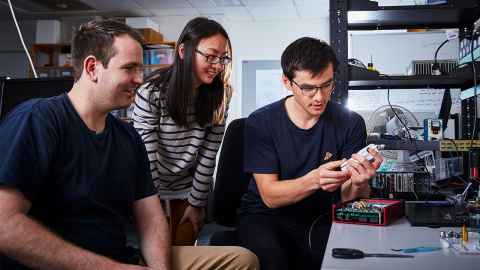Understanding microneedle-assisted jet injection
Eligible for funding* | PhD

Subcutaneous (SC) drug delivery offers several advantages over intravenous (IV) delivery including: self-administration, improved patient experience, and reduced treatment costs. Unfortunately, each SC delivery is currently limited to ∼ 2.25 mL with IV administration required when the delivery volume exceeds this value. To address this issue our team has recently developed ‘multi-jet injection’, a technique where very large delivery volumes can be delivered as many small simultaneous jets. Multi-jet injection is a parallelised form of needle-free jet injection where a liquid drug if formed into a tiny, high-speed jet capable of penetrating through the skin and delivering itself into the tissue. Jet injection can be performed needle-free or through a small microneedle. The needle-free approach avoids needle-phobia, sharps-waste, and accidental stick injury. However, microneedle-assisted jet injection requires lower jet speeds to pierce the tough epidermis to reach the fat or muscle tissue, permitting the device to be much smaller and/or accommodate greater injection volumes. Our initial work suggests that microneedle-assisted jet injection can deliver significantly greater volumes, offering a promising solution to large-volume SC drug delivery.
In this project we seek to understand how the size, length, number, and spacing of injections sites influences delivery using microneedle-assisted multi-jet injection. We are also interested in how drug viscosity affects this delivery technique and how devices can be designed to accommodate the maximum delivery volume. This will involve computational modelling of the jet formation process and lab-based injection studies. This work will inform the development of injection devices that can allow patients to rapidly self-administer drugs that would have otherwise needed hospital based IV injection.
Contact and supervisors
For more information or to apply for this project, please follow the link to the supervisor below:
Contact/Main supervisor
Supporting Supervisor
- Andrew Taberner
Eligible for funding*
This project is eligible for funding but is subject to eligibility criteria & funding availability.
Page expires: 5 December 2025